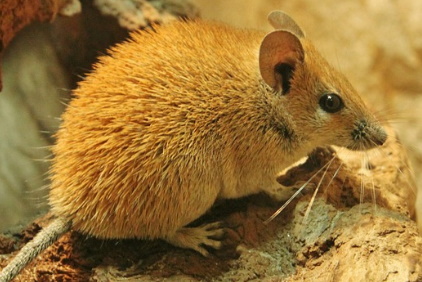Spiny Mice Environment
Since Spiny mice would would naturally live in the deserts of Africa it is important to keep them at higher temperatures - around 27℃ (81°F) is ideal so a heat source may be needed during the colder months. Their fur is designed to be resistant to heat and so they are not as well adapted as other mice to deal with colder temperatures. They also benefit from an environment that has low humidity and is away from drafts.
They should be kept in a large tank with a deep layer of pet-safe bedding and layers of hay. Plastic is not suitable as they could chew their way out. The tank lid must be secure to avoid escapees but also well ventilated; mesh lids can be constructed quite cheaply to replace aquarium hoods.
The footprint of the cage, comprising its width and length, is far more important than height for a spiny mouse environment. I've seen a minimum of 10 UK gallons recommended for a pair although personally I would always go larger than this as they are very active.
They are good jumpers and need plenty of cardboard tubes, nests and other climbing material.
They have no discernible odour and should be cleaned out once a month depending on the size of their cage. Since they also have a lot of energy, a solid based medium size wheel also makes a great addition. Like any tailed rodent, a wheel with gaps is not suitable however it should be noted that spiny mice have especially vulnerable tails and should never be picked up or handled by them as they can be prone to de-gloving. A flying saucer wheel could also be given to allow multiple animals to run at once more easily.
Although colonies of spiny mice can get along well it is important to make sure you do not overcrowd your tank. Fights due to overcrowding can be vicious, even fatal and you must separate out animals if you witness bite marks, or pulled out hair.

